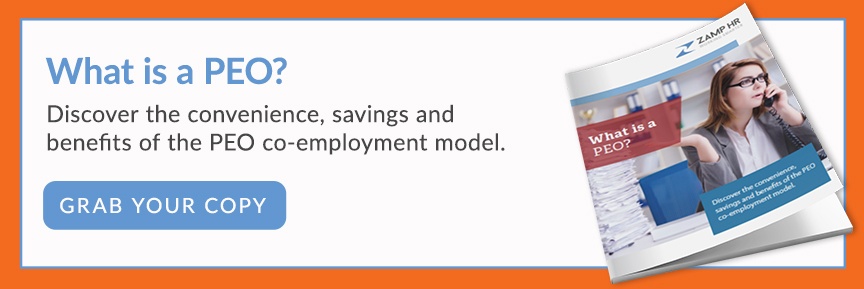For years, the human resource outsourcing (HRO) industry has been growing — at a rate of more than 8 percent year-over-year, according to some estimates. This growth rate is understandable given the increasing complexity of human resources challenges businesses must face today, coupled with the ever-present need to keep costs low.
Technological tools have automated many standard administrative human resources tasks, allowing HR personnel to concentrate on more value-added activities, such as developing training and professional development opportunities.
The HRO industry's growth is expected to continue, driven by three major HR trends: the demand for integrated software solutions, the rise of co-employment, and the need for greater employee engagement.
The Demand for Integrated Software Solutions
In many companies, HR has operated as a silo and needed to work with multiple programs also siloed off. For example, HR employees might work with their own online recruitment system, accounting's payroll system, and a third party's benefits system, among others. However, the inefficiencies presented by this complex of systems cost time and money. IT companies developed new integrated cloud-based systems — human resource information systems (HRISs) that incorporate recruitment, onboarding, payroll and benefits, time and leave, and more. And while many large companies purchased enterprise versions of these software packages, some hesitated given the high switching costs involved with retiring their legacy systems.
However, the pricing for an enterprise-wide HRIS puts it out of reach of many other small and midsize businesses (SMBs). Professional Employer Organizations (PEOs), which have helped drive the co-employment trend, increasingly offer HRIS access to commercial clients as part of their standard service offerings. By doing so, SMBs can streamline and automate their most common administrative tasks, saving them time and money.
The Rise of Co-Employment
When companies first started to outsource HR functions, they began with routine administrative functions. However, gradually companies began to expand the scope of their outsourcing practices, including employment-related tasks. Co-employment occurs when a company outsources some of its employer responsibilities to a third party. However, this does not include any day-to-day control of operations that remains in the hands of the original employer.
By sharing employment responsibilities, a company can achieve dramatic cost savings and achieve a positive return on its HR outsourcing investment. For example, PEOs that work with large client bases in a particular region or nationally usually can achieve more favorable healthcare and workman's compensation insurance coverage than SMBs can on their own.
The Need for Greater Employee Engagement
By eliminating many of the time-consuming but necessary administrative, compliance, and employment-related tasks, your internal HR staff now have more time to focus on the intricate and personalized work they're best suited to do.
Now, your staff can devote their time to making sure each department has the staff and resources they need. They can work with your managers to develop and coordinate necessary training and staff development opportunities. You can work with them to identify promising staff and assess their readiness for promotional and advancement opportunities. And you can work with them on broader goals, such as advancing organizational values across the organization, ensuring you have a diverse workforce, and building talent pipelines to improve recruitment speed and outcomes.
Moreover, they can help you keep your employees engaged and productive. As more companies plan for permanent hybrid remote work, you need your HR staff on the front lines to prepare your organization for this new reality. And as all employees continued to grapple with the professional and personal effects of the pandemic, you need your HR staff to help you assemble the mental health resources needed to help your workforce cope. The need for firms to actively engage with and support their employees has rarely been more acute. And, working with a PEO, you can give your internal HR staff the resources they need to do so.
Your firm can benefit greatly from partnering with a PEO. You can save time and money and free up key staff to focus on value-added activities. To get the most out of a PEO, start by looking for one that offers integrated software systems. And to learn more about PEOs and how to evaluate them, download our eBook, "What is a PEO?"

.jpg)

